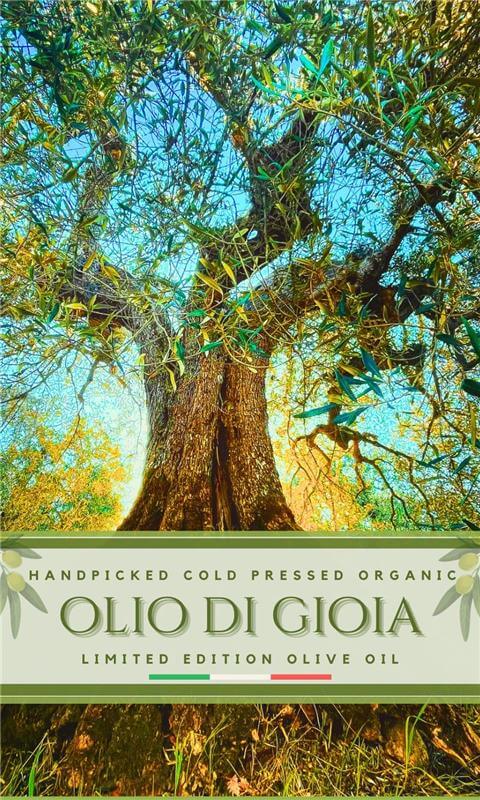
Olive Picking in Umbria: Harvesting the Mean, Green Polyphenol Machine
As the air starts to cool and the golden hues of autumn roll over the hills of Umbria, it is finally time to harvest the olives. This is a tradition that is rooted in centuries of care, craftsmanship, and connection to the land… But it’s a first for me
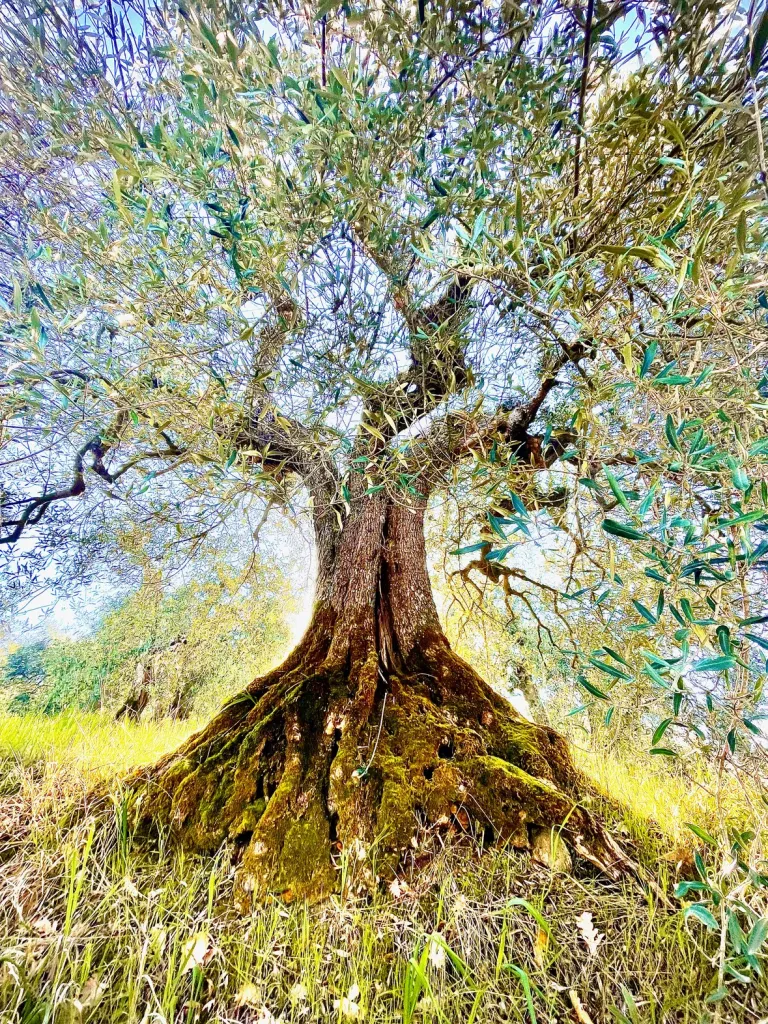
The History of Olive Oil
Olive oil has been a cornerstone of Mediterranean culture for over 6,000 years. Its origins trace back to ancient civilisations in the Eastern Mediterranean—Egypt, Crete in Greece, and Mesopotamia (modern day Iraq, Iran, northeastern Syria, and southeastern Turkey) — where olives were first cultivated. The Greeks and Romans, recognising its nutritional and medicinal value, spread olive cultivation throughout their empires, from Southern Europe to North Africa. As today – olive oil was used not only in cooking but also in religious and beauty rituals, as a base for perfumes, to anoint athletes, and even as fuel for lamps. It has always symbolised peace, prosperity, and health, a tradition that continues today in many parts of the world.
Strange then that every year, as much as I always look forward to that extraordinary spicy, grassy, silky sexy flavour of freshly pressed oil, I have never – until now – thought about joining in with the rhythm of picking olives from my own trees. I left all that to Roberto the gardner. This year however that all changes! Inspired by friend Carli, who – over a couple of Proseccos – insisted it was a good idea, I am now preparing (with her) for the hard work ahead. Keeping my eyes on the prize: the reward of the pure olive oil for which Umbria is known.

Olives in Umbria
Olive trees thrive in the Mediterranean climate, and Umbria is one of the most prized regions in Italy for olive oil production. The soil here is mineral-rich, the summers hot and dry, and the winters relatively mild, creating the perfect conditions for the trees to flourish. Olives in Umbria have been cultivated for over a thousand years, and many of the groves here are dotted with ancient trees, their twisted trunks testifying to the generations who have cared for them.
Olive Oil in Umbria
In Umbria, olive oil production has been central to the region’s agriculture since ancient times. The Etruscans (who inhabited the area long before the Roman Empire) are thought to have been the first to cultivate olive trees in these delicious hills. Over centuries, olive oil became an essential part of Umbrian life. Today, Umbria is renowned for its high-quality extra virgin olive oil, often recognised with DOP (Denomination of Protected Origin) status, ensuring that the oil is produced according to strict standards. The region’s unique climate—cooler than Tuscany and with rich soil—produces an olive oil that is robust, green, and peppery.
Let the Preparations Begin (aka what I have learnt so far)
Before the olives can be picked, naturally here’s a bit of preparation involved. You start by checking the health of the trees—ensuring the branches are strong, the leaves vibrant, and the olives ripening in time for the late autumn harvest. October and November are the key months. The gods of the seasons, the weather and pestilence have waltzed their dance of chance and by now the olives should be plump and ready, turning from green to black.
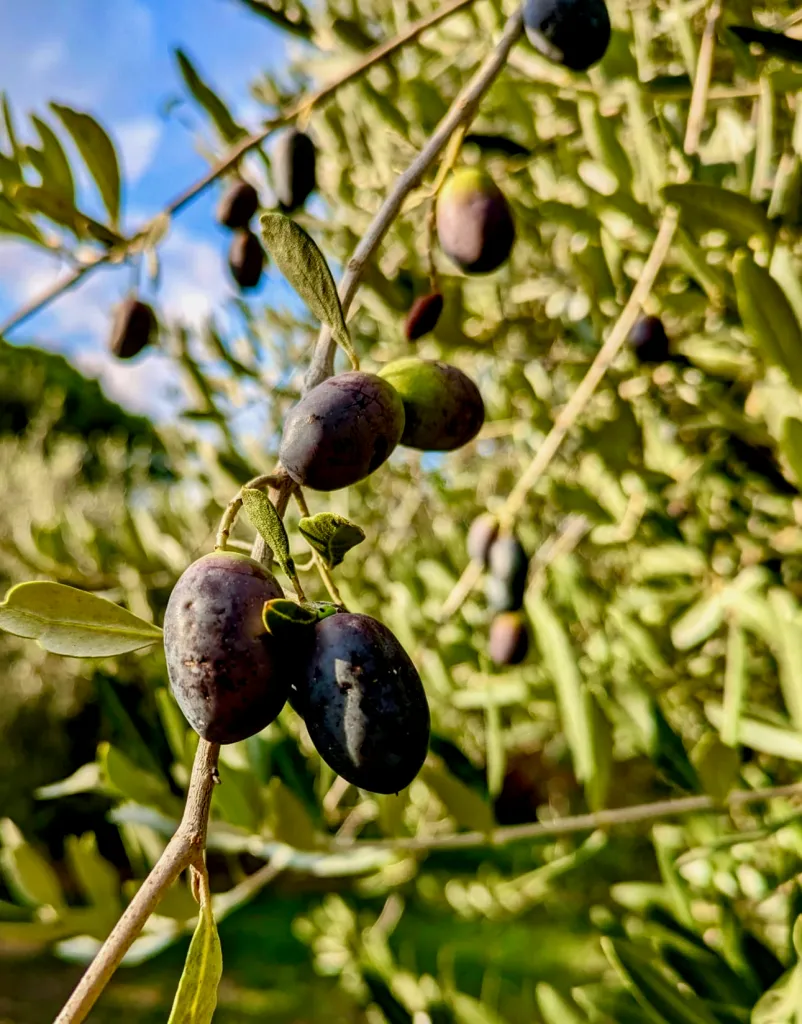
According to Carli the work is physical, but it’s also deeply satisfying. You first gather the nets, and prune the lower branches. This serves several important purposes. Removing these branches also makes it easier to access the olives higher up in the tree, facilitating a smoother and more efficient harvest, reducing the risk of damaging the fruit or the tree during the picking process. You then need to make sure the tools of the trade – in my case hand rakes – are in good condition. Some use mechanical means like vibrating machines that shake the olives off the trees, but for now it’s the manual method. I am imagining there will be something intimate and calming about it. Watch this space.
EVOO the Extra Virgin Organic Way
One of the things I take pride in is that the olives from my trees are grown organically, following traditional methods that respect the land. Roberto the gardner has never used pesticides or chemical fertilisers—just the natural, organic cycle of the earth. This not only preserves the health of the soil but also enhances the flavour of the oil. Organic and ‘zero kilometre’ sustainable farming has gained momentum in Umbria in recent years, partly as a response to the region’s commitment to sustainability and the protection of its ancient groves. While it requires more attention—hand-weeding, natural pest control methods, and careful soil management—it’s worth it for the vibrant taste and the knowledge that the trees are part of a healthier ecosystem. Plus, there’s something deeply rewarding about knowing the oil you’re enjoying comes from trees that are treated with love care and respect (thank you Roberto).
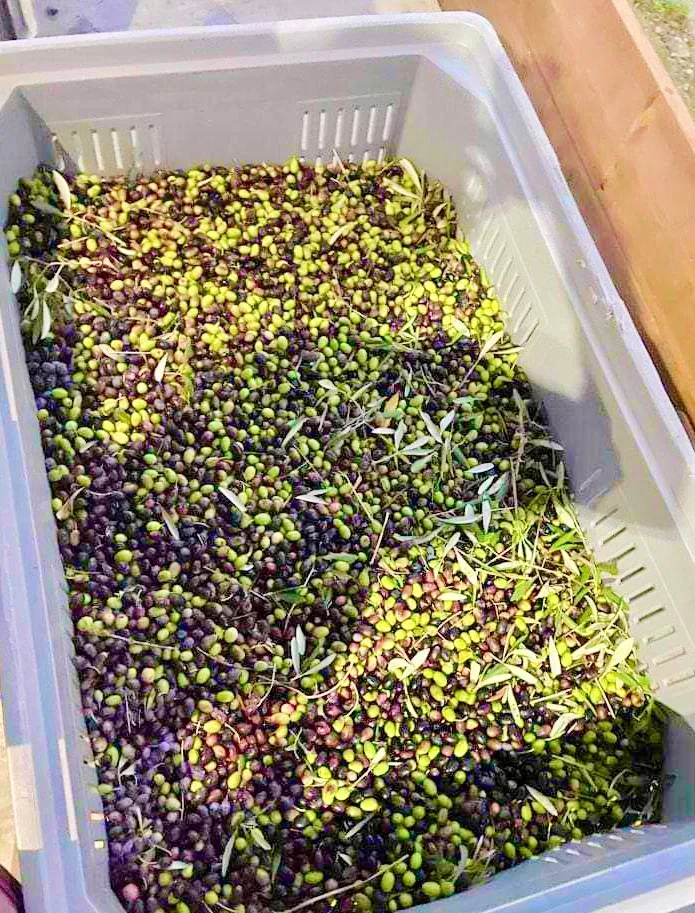
When and how you Harvest
Olives are typically harvested from late October to early November, but the exact timing depends on the weather and the ripeness of the fruit. Some prefer to pick their olives when they’re still green, which produces a stronger, more pungent oil, while others wait until they’ve darkened to achieve a mellower flavour. In Umbria, many families opt for a mix of both green and black olives, resulting in a balanced, flavourful oil that reflects the best of the season. In my case it’s when I can get time off work. Late October it is!
How is Olive Oil Milled?
Once the olives are harvested, it’s a race against time. The fresher the olives, the better the oil so you need to get them to the frantoio (olive mill) to be pressed. The milling process begins with washing the olives to remove any dirt or debris. They are then crushed into a paste, traditionally using large stone wheels, though modern mills often use steel grinders. This paste is then stirred slowly in a process called malaxation, which helps the oil droplets gather together. From here, the paste is cold-pressed—without heat—to extract the oil, ensuring that its flavour and nutritional properties remain intact. The first pressing yields the finest extra virgin olive oil, rich in antioxidants and with a fresh, grassy aroma. The oil is then filtered and stored in dark, airtight containers to preserve its vibrant taste before being bottled and enjoyed
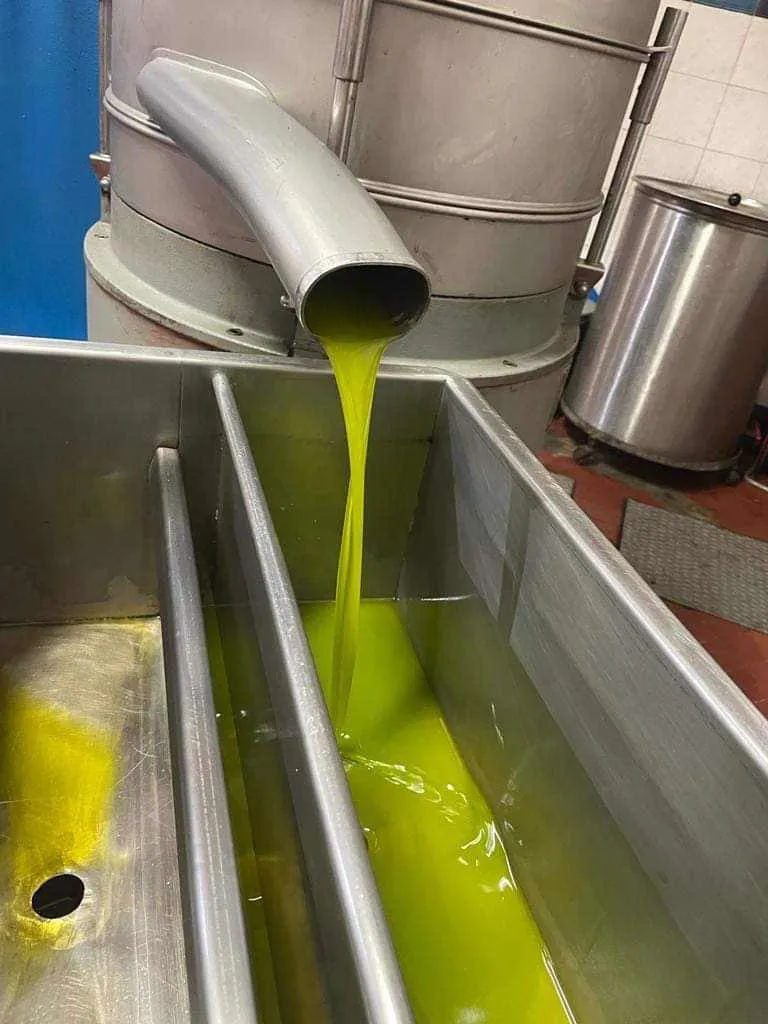
Umbrian Olive Oil: Liquid Gold
The result of all this hard work is a vibrant, green-gold liquid (that has been called liquid gold for centuries). The first taste (something I do have experience in) is always the most thrilling — drizzled over a slice of warm, crusty bread, with a sprinkle of sea salt. That moment is pure magic, the culmination of months of care and attention.
Freshly pressed olive oil is like nothing you have tasted before (unless you have). It is an explosion of flavours. The moment it touches your tongue, you get an intense burst of fruity, grassy notes—like biting into a crisp apple or freshly cut herbs. There’s a distinct green freshness to it. Just-mowed grass, green tomatoes, raw green stuff. It’s beautifully bold yet balanced, with a slight bitterness that adds depth, followed by a peppery kick at the back of the throat—a sign of its richness in polyphenols, those healthy antioxidants. The texture is smooth, almost silky, and it lingers on your palate with a vibrant, clean finish. This is olive oil in its purest, most unfiltered state, full of life and flavour!
Read my Interview with Amanda Forman of Olivando Olive Oil HERE
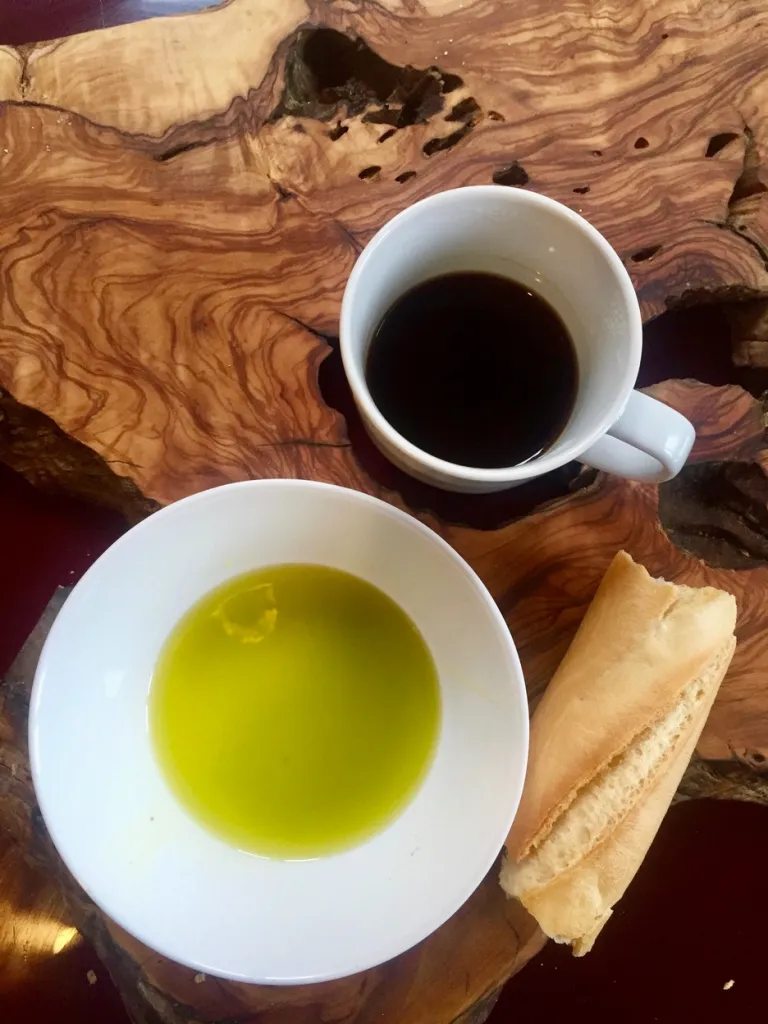
Umbrian olive oil holds a special place in Italian cuisine. Because of its bold flavour, it’s often used sparingly, but in dishes that allow its complexity to shine through. Whether it’s drizzled over a simple salad of ripe tomatoes and mozzarella or used to finish a rich bean stew, the oil elevates all the flavour and adds a depth that’s impossible to emulate.
How to Spot a Good Olive Oil at the Supermarket
The colour varies from golden yellow to deep green. There’s an unmistakable brightness that tells you the olives were pressed at their peak, and you’re getting something pure and unrefined. Always look for “extra virgin” on the label, as this means the oil is cold-pressed and of the highest quality, with no additives or refining. When you get it home you know a good olive oil the moment it hits your senses. The first thing you notice is the aroma—fresh, green, and almost grassy, sometimes with a hint of artichoke or tomato leaves. When you taste it, there should be a balance of fruitiness, bitterness, and pepperiness. A high-quality olive oil will have a smooth, almost velvety texture, but with a slight bite at the back of the throat—that peppery kick is from the antioxidants, and it’s a good sign!
Why Olive Oil is Good for You
Olive oil is celebrated for its many health benefits, especially when it’s high-quality, extra virgin. It’s packed with healthy monounsaturated fats, which help reduce inflammation and lower the risk of heart disease by improving cholesterol levels. Olive oil is also rich in antioxidants, particularly polyphenols, which protect your body against cell damage, support heart health, and have anti-aging properties.
The anti-inflammatory properties of olive oil, especially in its fresh, raw form, can help reduce the risk of chronic diseases like diabetes and cancer. It’s also good for brain health, with studies suggesting it can lower the risk of cognitive decline and Alzheimer’s. On top of that, olive oil supports digestion, improves skin health, and is linked to better bone health thanks to its ability to help calcium absorption.
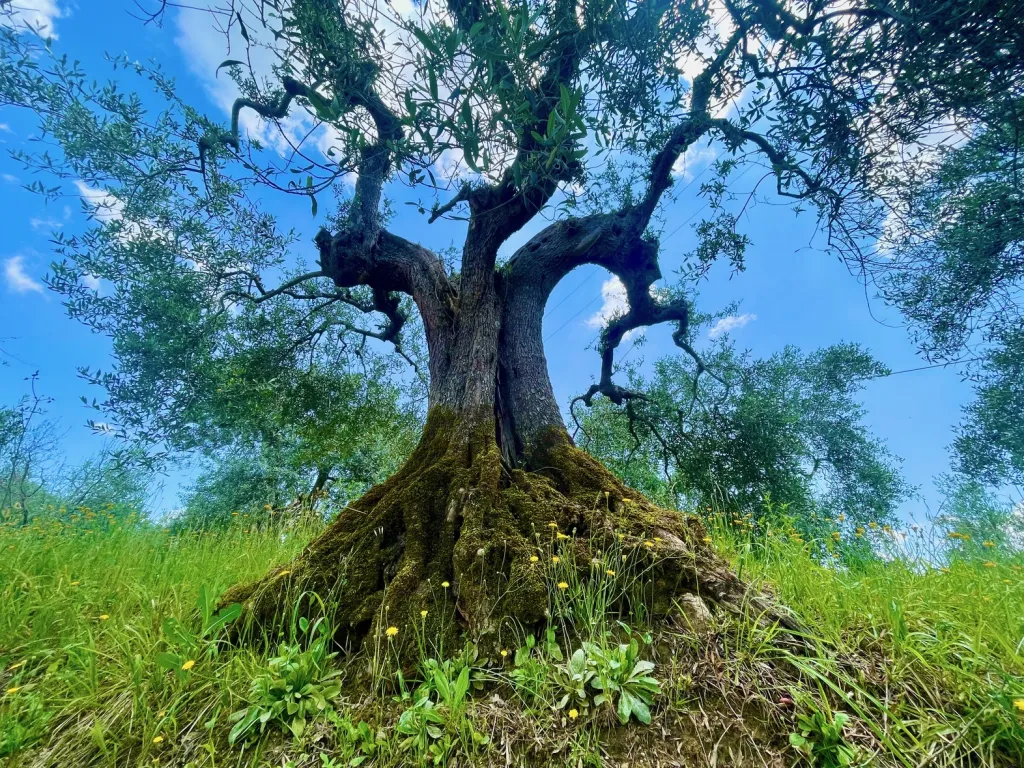
The olive trees themselves are a constant reminder of nature’s resilience and beauty. They are strong, enduring, and generous, producing their fruit year after year, asking only for a little care in return. And when the harvest is over, and the new oil is safely bottled, there’s a deep sense of satisfaction in knowing that this timeless cycle will continue again next year.
Join us in Umbria for the Olive Harvest
If you’re as enchanted by the ancient olive oil traditions as we are, why not come and experience it for yourself? Whether you’re a seasoned olive oil connoisseur or just curious about the process, we’d love to share the magic of Umbria’s olive harvest with you. Let’s pick, press, and taste our way through this beautiful season together!
Contact now to find out more!

October 1, 2024
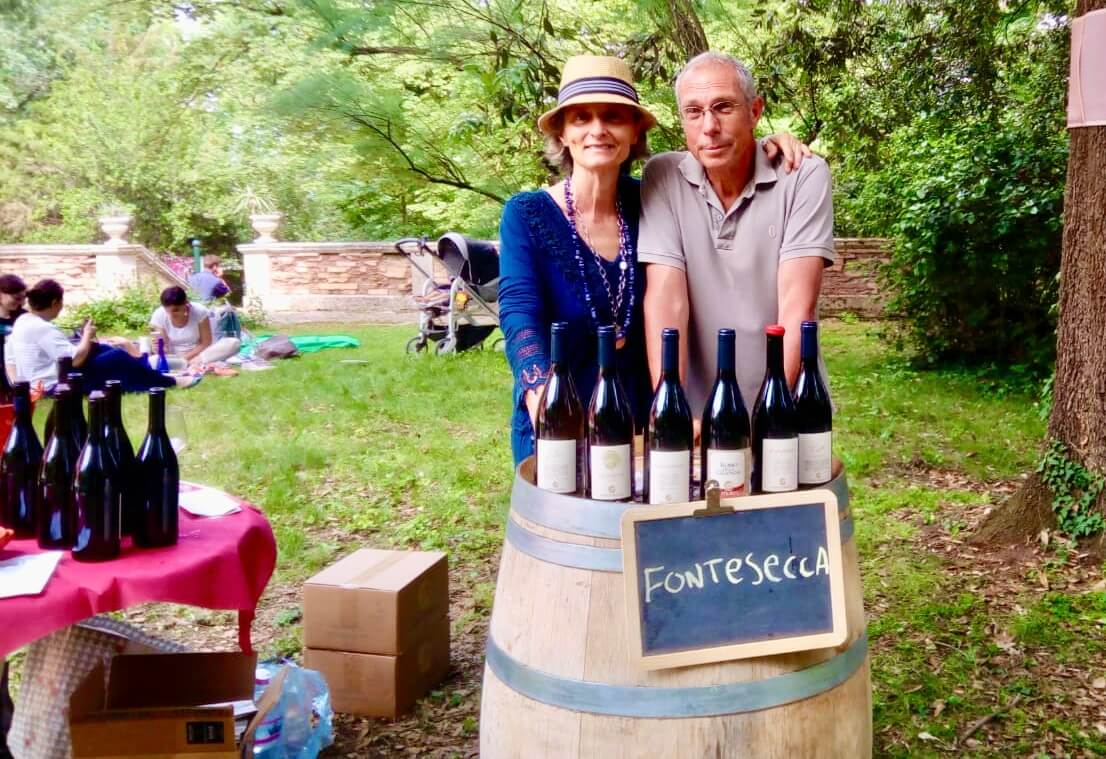
November 9, 2024
A Toast to Tradition, Terroir, Organic Umbrian Wine (and Love)
